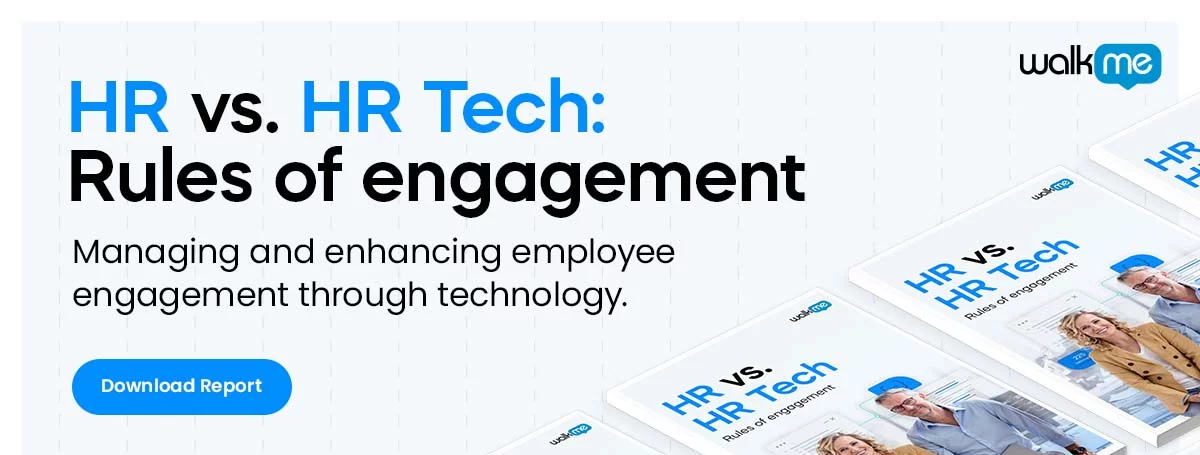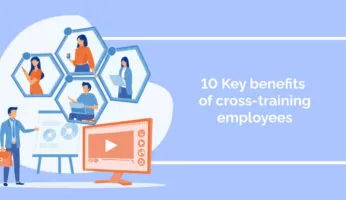
Measuring employee productivity can offer insight into an organization’s operations, performance, and even its financials.
But what is the best way to measure productivity?
Time tracking apps, employee monitoring software, or something else?
Read on to find out.
Measuring Employee Productivity: A Guide for the Digital Workplace
Below we’ll look at some of the most important elements you need to effectively measure employee productivity in the digital workplace, including software, metrics, and more.
Employee Monitoring Software
Employee monitoring software, also called employee productivity trackers, measures employee performance by analyzing elements such as:
- Tasks
- Time
- Employee output
- Business processes
Several types of software applications can be combined to track employee productivity effectively, such as:
- Digital adoption platforms (DAPs)
- Spreadsheet software
- Task mining software
- Process mining software
- Survey software
Each tool will play a different role in the employee monitoring process.
For example, DAPs can measure employees’ software interactions.
The information collected from those interactions can then be compiled to gain a better understanding of both business processes and employee productivity.
Employee Productivity Metrics
The elements listed above, such as time and tasks, are useful for measuring productivity. Typically, this involves measuring an output against the time it takes to complete a task, which can then be tied to an organization’s financial KPIs.
Here are a few examples:
- Time-to-competency
- Time-to-productivity
- Task completion time
- Project completion time
- Total project cost
- The costs of specific tasks
Employee productivity metrics, on the surface, are ideal for measuring employees’ performance. They can also be used to gain insight into other areas of the business.
Analyzing employee performance, after all, can offer insight into the cost-efficiency of business processes, software, and so forth – in other words, employee productivity can improve business intelligence.
A Structured Monitoring Program
An employee monitoring program should be a structured, dedicated business function.
As with any other business function, it should include:
- Leadership, management, and a team
- Goals and objectives
- Processes, procedures, and best practices
- A strategy and a plan
- Inbuilt processes for continual improvement
Having a structured program is essential for calculating the ROI of employee productivity – and, just as importantly, improving that ROI over time.
Yet many businesses don’t prioritize employee monitoring, nor do they see the value in it. For this reason, it is important to assess the value of a monitoring program and obtain buy-in from leaders.
Executive Sponsorship
Executive sponsors are essential to the success of any business program, including a program designed to measure employee productivity.
Obtaining that sponsorship is not always easy, but it can be done, especially if you count the ROI in terms that the executive can understand.
A CFO, for instance, is interested in financials, such as costs and ROI, so it is useful to discuss finances.
An HR director, on the other hand, would be more interested in the impact on the workplace and the workforce.
CEOs are interested in an organization’s direction and its future, so it is good to describe the impact that a productivity monitoring program would have on the business itself.
When making a case for employee monitoring, in other words, describe it in terms that C-suite executives can relate to.
An Employee Training Program
Another area to include within employee monitoring is training.
Since employee training affects employee productivity, it is also useful to track training programs. That is, not only should you track productivity, you should evaluate the types of training and how they affect employee productivity.
In addition to the metrics covered above, such as time-to-competency and time-to-productivity, also include metrics that focus on the training itself.
These can include:
- The type of training used
- The impact of different types of training on productivity
- Training costs for different training methods
- Bottom-line ROI of the training program
It is also useful to include qualitative input, such as feedback from employees, since that can reflect the type of experience they are having with a program.
Privacy Considerations
It is important to respect employees’ privacy whenever using monitoring software.
Certain monitoring software, such as software analytics, does involve the extraction of software interaction, as mentioned above.
Protecting privacy is not only the right thing to do, it is also the best way to maintain employees’ trust. If employees feel that their privacy is being invaded through the use of monitoring software, they will be less trusting, less engaged, and it can negatively impact their performance.
Finally, bear in mind that privacy is a legal matter in certain areas of the world. Laws such as the GDPR are designed to protect individuals’ privacy and these types of laws should be examined closely before using monitoring tools.
Final Thoughts
Measuring employee productivity can be an excellent way to improve employee performance and the organization’s performance.
However, as we have seen, measuring employee productivity requires some effort. It is necessary to create a structured program and use several tools when monitoring and measuring employee performance.With the right approach, though, increasing the efficiency and effectiveness of business processes can generate bottom-line profits. It can also result in the improvement of business processes, which can improve the employee experience and enhance the workplace.
WalkMe Team
WalkMe spearheaded the Digital Adoption Platform (DAP) for associations to use the maximum capacity of their advanced resources. Utilizing man-made consciousness, AI, and context-oriented direction, WalkMe adds a powerful UI layer to raise the computerized proficiency, everything being equal.



